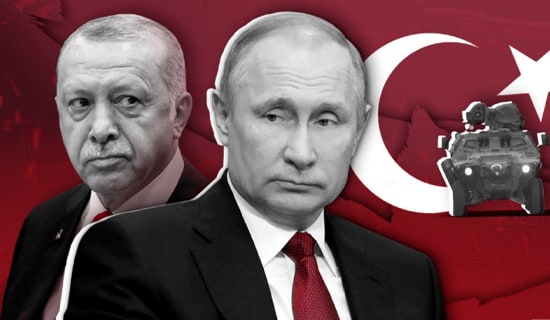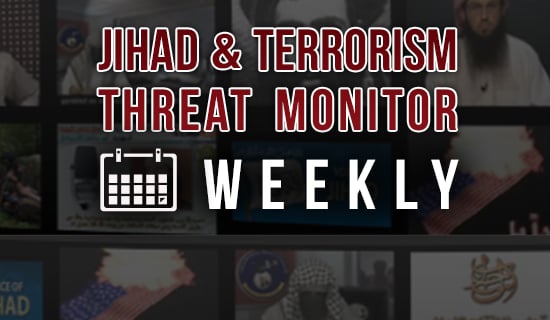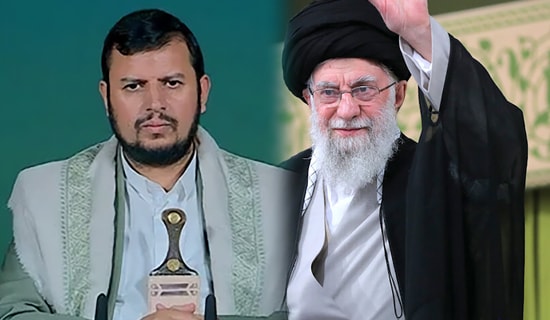Iran is Now Accepting a Temporary Suspension of Enrichment
A few days before the U.N. Security Council discussion on widening the sanctions against Iran under UNSC Resolution No. 1737, which was scheduled for February 13, 2007, [1] there are signs of an Iranian retreat in the face of Saudi, U.S., and European pressures regarding its uranium enrichment. The following is a review of these signs:
A) Iranian Foreign Relations Steering Council member Ali Akbar Velayati, who is international affairs advisor to Iran's Supreme Leader Ali Khamenei, left for Moscow on February 7 with a positive response to Russian President Vladimir Putin's recommendation that Iran's leaders accept the ElBaradei proposal under which Iranwould freeze its uranium enrichment in exchange for a freeze on sanctions against it. [2] In addition, on February 14, 2007, Velayati said, on the issue of a freeze on uranium enrichment, that "there is no idea that cannot from the outset be considered." [3]
B) Iran's Supreme National Security Council Secretary Ali Larijani, who is in charge of Iran's nuclear dossier, said "the proposals based on us activating centrifuges in such a way that uranium enrichment will be in minimal quantities can be an opening point." [4]
C) On February 12, 2007, Iranian Foreign Ministry Spokesman Mohammad Ali Husseini announced that "Iranis considering all the issues, even freezing [uranium enrichment], as worthy of examination in the framework of negotiations." [5] At the same time, Husseini announced on February 13, 2007 that Iran would never accept the demand to freeze uranium enrichment as a precondition for negotiations. [6]
D) On February 9, 2007, Majlis National Security and Foreign Policy Committee Member Dariush Qanbari said that Iran was willing to partially freeze uranium enrichment, "as a goodwill [gesture]... A temporary freeze under the current conditions in order to gain the trust of the European side and the UNSC members is the best way to solve the nuclear crisis..." [7]
E) On February 8, the Baztab website, which is affiliated with Expediency Council Secretary Mohsen Rezai and considered to be in the camp of Supreme Leader Ali Khamenei, reported that there was a possibility that Iran would freeze uranium enrichment for two months: "[Towards the UNSC discussion on the continued handling of the nuclear crisis], commentators anticipate three possible scenarios. The first is an examination of the ElBaradei proposal... The second is... the continued implementation of Resolution 1737, where instead of issuing a resolution on additional sanctions... the negotiations between Iran and Europe will continue in order to arrive at a possible outcome. But the third scenario, that has a greater chance of acceptance by both sides, is a return to the previous 11-section agreement between [E.U. Foreign Policy chiefJavier] Solana and [Supreme National Security Council Secretary Ali] Larijani, and the addition of a 12th section that stipulates that when the 11 sections mentioned by the 5+1 countries are signed, Iran will implement a two-month freeze on uranium enrichment..." [8]
F) President Ahmadinejad's further postponement of a long-promised speech revealing Iran's nuclear achievements. [9] (News on this issue is now promised to be released occasionally until April 9, 2007.)
G) In addition, senior Iranian officials made statements in favor of negotiating with the U.S. On February 11, Iranian Expediency Council Chairman Ali Akbar Hashemi Rafsanjani said, "It would be effective for us to negotiate [with the U.S.], but [at the same time preserving Iran's] honor." [10]
Khamenei-Ahmadinejad Rift Widens
Against the backdrop of the need to respond to the Saudi, European, and international pressures, there are signs of a widening of the internal rift between Iranian Supreme Leader Ali Khamenei and President Ahmadinejad.
Evidence of this widening can be found, for example, in the Baztab website's repeated attacks on Ahmadinejad's policy, and, on the other hand, in the banning of the website by Iran's Ministry of Culture and Islamic Guidance, on charges that it was harming the state by disseminating despair and pessimism among the people about the legitimacy and effectiveness of the regime, insulting judiciary figures and regime officials, and spreading lies and slander. [11]
At the same time, President Ahmadinejad and top Iranian officials are issuing statements that Iran will not freeze its uranium enrichment. Thus, for example, on February 11, 2007, Ahmadinejad declared, during celebrations marking the anniversary of the Islamic Revolution, that "the Iranian people will never agree to such a disgrace." [12]
Iranian Threats Against the U.S. Continue
In a speech marking the anniversary of the Islamic Revolution, Iranian Defense Minister Mostafa Mohamed Najar stated, "Thanks to God and to the efforts of the Iranian experts, we are today at a stage where we can produce all our armed forces' needs [by ourselves] within Iran... Even though, for security reasons and in order to prevent the enemy from exploiting [the information] we cannot publish our [military] achievements, the production of various anti-missile missiles and of surface-to-surface missiles with warheads for various uses and a 2,000 km range are only a small part of our defense capabilities..." [13]
On February 10, 2007, Iranian Revolutionary Guards Commander Yahya Rahim Safavi told Al-'Alam TV that Iran had constructed an unmanned aerial vehicle (UAV) with a range of 700 km which is already in operational use. Safavi added that Iran was independently manufacturing ballistic missiles with a range of 2,000 km. He said, "The aim in building the UAV was operational aerial photography, intelligence gathering, and sending images, but using it we can find out about the size of the bases, about the destroyers, and about the location of the enemy in the region, and based on this can make [attack] plans... This kind of UAV is... invisible to radar and also cannot easily be intercepted... The UAV has passed the test stage and is now on the mass production line, and we can even [already] use it for operational needs..."
Safavi continued, "Twenty-eight years after the victory of the Islamic Revolution, and particularly after the experienced acquired during eight years of war against Iraq [1980-88], Iran's Ministry of Defense and Armed Forces has attained the [capability] to independently produce various types of missiles, including surface-to-surface missiles, long-range missiles, ballistic missiles with a range of 2,000 km, and land-to-sea missiles... [Also], Iran's Ministry of Defense has been successful in building a satellite, but we need assistance from one of the neighboring countries to launch it..." [14]
Deputy commander of the land forces of the Iranian Revolutionary Guards Nour Ali Shoushtari said, at a conference commemorating the fallen in the Iran-Iraq war, that "Iran has built UAVs which can, if necessary, carry out suicide operations at any depth against the American destroyers so that they will leave the [Persian Gulf] region shamefacedly... If Bush wants to act logically, he must remove his forces from the region so that calm will prevail... If necessary, the atmosphere for these destroyers can be made insecure... The Americans know that in the event of confrontation with the Islamic regime, security will not prevail - not only not in the [Gulf] region, but also not in their country..." [15]
Commenting on military maneuvers conducted by the Iranian Revolutionary Guards Corps in the Persian Gulf, deputy commander of the Revolutionary Guards Navy Admiral Ali Fadavi declared that "the SSN4 strategic anti-destroyer missiles, with a maximum range of 350 km... cover the region of the Persian Gulf, the Strait of Hormuz, the Gulf of Oman, and extensive parts of the northern Indian Ocean... The advanced momentum system of the SSN4 cruise missiles, which can fly low above the water, strengthens them against electronic warfare; this missile's 500-kg warhead can harm and eliminate destroyers..." [16]
The deputy of the Majlis Committee for National Security and Foreign Policy, Mohamed Nabi Rodaki, threatened that "the U.S. must release, as quickly as possible, the Iranian diplomats, and must obey the international laws on diplomatic immunity... because otherwise the blood of the American diplomats will be subject to kidnapping..." [17]
In a February 12, 2007 analysis, Sobh-e Sadeq, the mouthpiece of Supreme Leader Ali Khamenei circulated among the Revolutionary Guards, wrote in an analysis titled "No Target is Out of Missile Range": In the event of direct confrontation of any kind, we will light the fire of Hell in the American military camps within a radius of several thousand kilometers [from Iran]." [18]
* Y. Mansharof is a research fellow at MEMRI
[1] The UNSC meeting did not take place on this subject due to backroom negotiations between the U.S., Europe and Russia on the possible terms of a new resolution.
[2] Aftab, February 8, 2007.
[3] Liberation, France, February 14, 2007, http://www.liberation.fr/actualite/monde/235120.FR.php
[4] ISNA, February 12, 2007
[5] ISNA, February 12, 2007.
[6] Tehran Times, February 14, 2007.
[7] Aftab, Iran, February 9, 2007.
[8] Baztab, February 8, 2007. It should be noted that in the past, Ahmadinejad said that "Iran will not suspend uranium enrichment, not even for a single day." See MEMRI TV Clip No. 1288, "Iranian President Mahmoud Ahmadinejad: As Soon as Iran Achieves Advanced Technologies, It Has the Capacity to Become an Invincible Global Power," September 28, 2006, http://memritv.org/clip/en/1288.htm. Mohsen Armin, spokesman of the reformist party Mojahedeen-e Inqilab-e Eslami, said in his November 2006 criticism of the Ahmadinejad government's policy that this was a negative response to the European proposal that Iran freeze uranium enrichment, even for a few hours; see MEMRI Inquiry and Analysis No. 317, "Iranian Domestic Criticism of Iran's Nuclear Strategy," January 24, 2007, http://www.memri.org/legacy/report/1810.
[9] Advisor to Ahmadinejad Ali Reza Zaker-Isfahani, the head of the Iranian presidency's Strategic Research Center, said that in the next two months Ahmadinejad would make his announcements on the nuclear issue. ISNA, February 14, 2007.
[10] IRNA, Iran, February 11, 2007.
[11] ISNA, Iran, February 13, 2007.
[12] Fars, Iran, February 11, 2007.
[13] IRNA, Iran, February 11, 2007.
[14] IRNA, Iran, February 11, 2007.
[15] Mehr, Iran, February 11, 2007.
[16] Mehr, Iran, February 11, 2007.
[17] Sobh-e Sadeq, Iran, February 12, 2007.
[18] Sobh-e Sadeq, Iran February 12, 2007.





